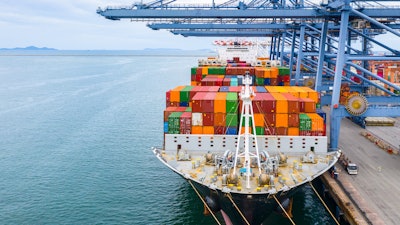
Nearly 1.5 years after the pandemic first shocked the world and upended global supply chains, retail, manufacturing and logistics organizations continue to grapple with disruptions in the New Normal. From unpredictable surges in consumer demand and staffing shortages to depleted materials and inadequate digital infrastructures, enterprises—and their supply chains—are buckling under the pressure.
The recent backlog of cargo ships off the coast of southern California further details these mounting impediments and portrays the current state of global supply chains. With dozens of ships awaiting entry into America’s largest ports in Long Beach and Los Angeles, enterprises will not only be forced to provide short-term solutions to clear the logjam, but also look to long-term best practices to avoid another bottleneck scenario. Moreover, with the holiday rush right around the corner estimated to bring in $1 trillion in sales, retailers, manufacturers and logistics companies will have to quickly prepare new strategies to brace themselves for even more potential delays throughout the upcoming weeks.
To bolster supply chains and cash in on the estimated holiday sales growth, retail, manufacturing and logistics enterprises must rapidly rethink their strategies and turn to these three tactics to give them the flexibility and foresight to successfully operate in the modern market.
Scenario planning
With over a year’s worth of lessons learned during the pandemic, organizations should recognize the necessity of extensive contingency planning in the “New Normal.” This process begins with a thorough risk identification stage, largely using historical data to highlight potential issue areas. After which, retailers and logistics companies must predict the impact of these disruptions and map out solutions to take immediate corrective actions when necessary. Although this process will vary from organization to organization, retailers and logistics enterprises should utilize predictive technology, such as digital twins, to run risk simulations ahead of their holiday planning activities.
Organizations not currently following this scenario planning process are likely to struggle with supply chain management, especially while preparing for the holidays. By taking the time to properly plan in the weeks leading up to the holidays, retail and logistics organizations will undoubtedly save time, money and resources.
Alternative delivery methods and partnerships
Despite the many supply chain issues the market has experienced since the onset of the pandemic, retail consumers, namely e-commerce consumers, have heavily relied on supply chains for door-to-door delivery over the past year and half. And, with growing consumer demand projected for the holiday season and a rise in shipping costs narrowing retailers’ profit margins, enterprises must act fast and discover alternative delivery methods to reach their eager end users. These delivery tactics include utilizing contingency carriers, shortening delivery chains or improving tracking processes and mechanisms.
Additionally, retailers and logistics organizations must expand their networks to meet consumer demand and look to last-mile delivery services as critical supply chain partners. These small-but-mighty newcomers can help larger enterprises expedite their shipping and handling times and reach consumers in the critical last mile of the supply chain through specialized technology offerings and vast networks of gig delivery workers.
Rapid digitalization
Although widespread digital transformation is a complex, multi-year process, retailers and logistics enterprises should prepare to update and adopt certain technologies in the short-term as well. To begin this accelerated push, organizations must carefully identify use cases and the potential returns on investments certain technologies offer. In doing so, they can successfully integrate these offerings into their infrastructures and begin using these technologies to solve their current supply chain challenges.
That said, perhaps the most important technology for enterprises to overcome future disruptions and brace for the holidays are automation capabilities. By increasing forecasting accuracy, reducing latency and time constraints, and allowing for better planning and risk identification, automation can help mitigate numerous issues that are bound to arise throughout supply chains.
Fail to prepare, prepare to fail
With many U.S. ports nearing supply capacity—or even closure—and troublesome trends carrying over from last year, organizations must begin strategizing immediately. In fact, retailers, manufacturers and logistics companies not currently rethinking their supply chain management methods are already behind the curve. By establishing numerous contingency plans, finding alternative delivery methods to reach end users and quickly implementing specific technologies, organizations will have an arsenal of solutions to resolve the various issues they inevitably will face in the New Normal.
















![Pros To Know 2026 [color]](https://img.sdcexec.com/mindful/acbm/workspaces/default/uploads/2025/08/prostoknow-2026-color.mduFvhpgMk.png?ar=16%3A9&auto=format%2Ccompress&bg=fff&fill-color=fff&fit=fill&h=135&q=70&w=240)

